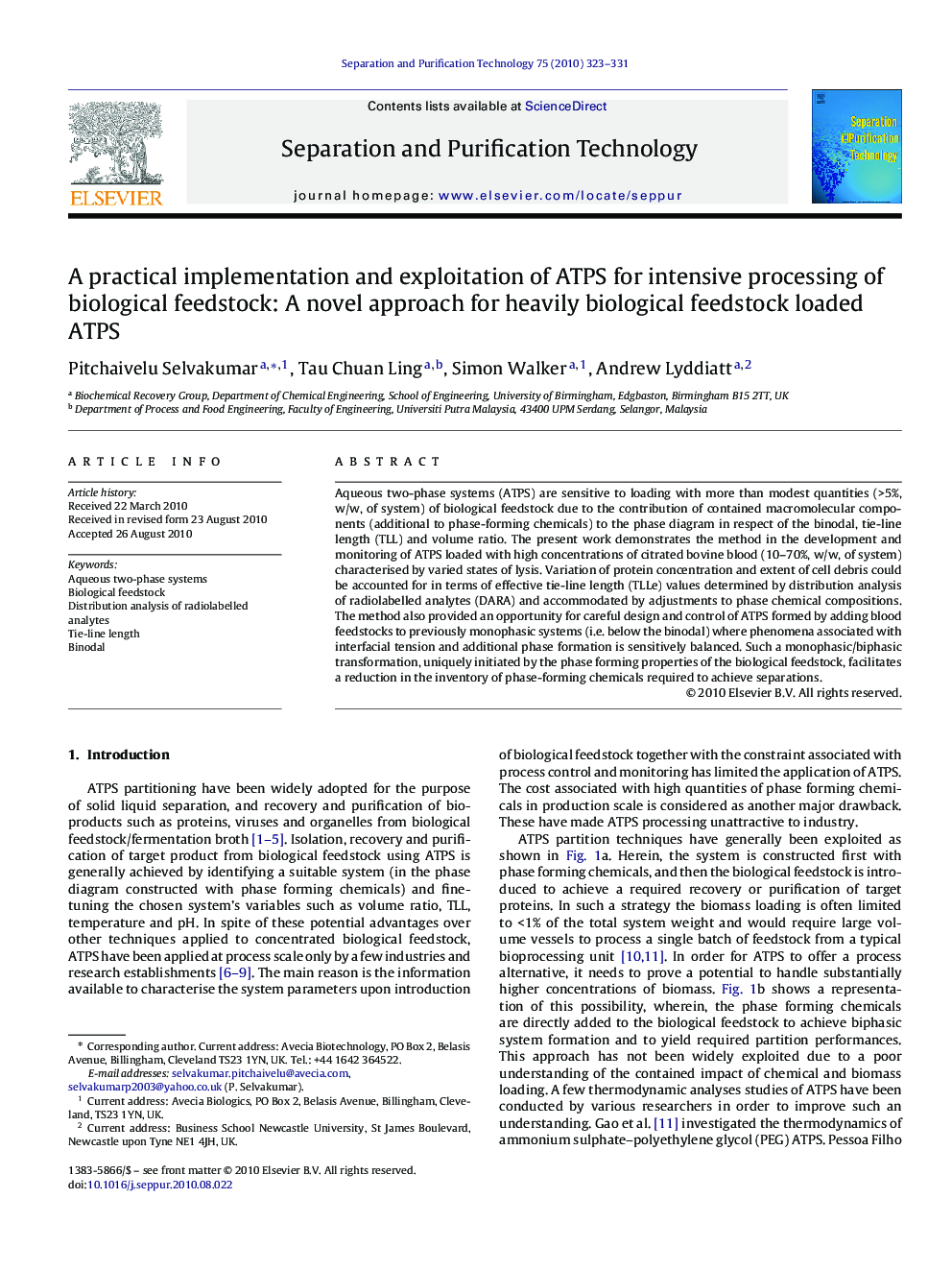| Article ID | Journal | Published Year | Pages | File Type |
|---|---|---|---|---|
| 642822 | Separation and Purification Technology | 2010 | 9 Pages |
Aqueous two-phase systems (ATPS) are sensitive to loading with more than modest quantities (>5%, w/w, of system) of biological feedstock due to the contribution of contained macromolecular components (additional to phase-forming chemicals) to the phase diagram in respect of the binodal, tie-line length (TLL) and volume ratio. The present work demonstrates the method in the development and monitoring of ATPS loaded with high concentrations of citrated bovine blood (10–70%, w/w, of system) characterised by varied states of lysis. Variation of protein concentration and extent of cell debris could be accounted for in terms of effective tie-line length (TLLe) values determined by distribution analysis of radiolabelled analytes (DARA) and accommodated by adjustments to phase chemical compositions. The method also provided an opportunity for careful design and control of ATPS formed by adding blood feedstocks to previously monophasic systems (i.e. below the binodal) where phenomena associated with interfacial tension and additional phase formation is sensitively balanced. Such a monophasic/biphasic transformation, uniquely initiated by the phase forming properties of the biological feedstock, facilitates a reduction in the inventory of phase-forming chemicals required to achieve separations.
Graphical abstractFigure optionsDownload full-size imageDownload as PowerPoint slideResearch highlights▶ A cost effective implementation and exploitation of ATPS for intensive processing of biological feedstock. ▶ A novel approach for heavily biological feedstock loaded ATPS.
